The Gift of South Dakota
Subscriptions to South Dakota Magazine make great gifts!
Subscribe today — 1 year (6 issues) is just $29!
Built on Fur
Dec 13, 2016
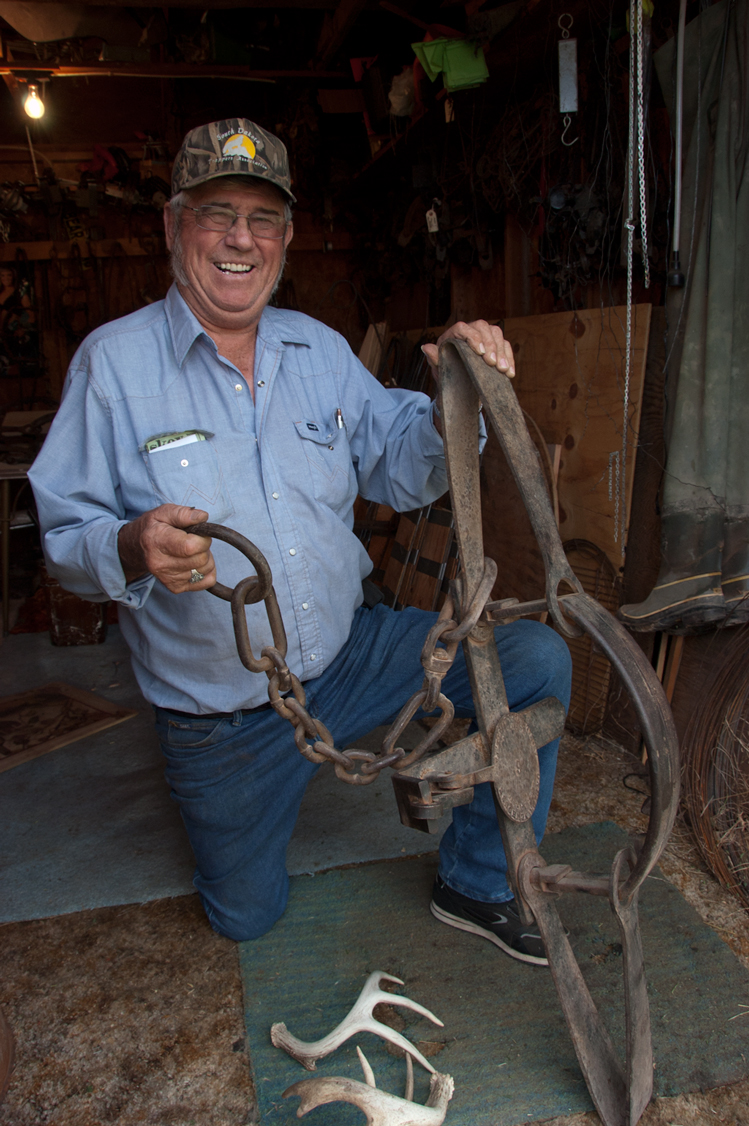 |
| Phil Steckley and the Newhouse No. 6. |
I remember clearly walking into a shed on Phil Steckley’s farm south of Geddes. We had traveled into Charles Mix County to do a story on the rich fur trading culture that had grown there over the last two centuries, and to find people still living it out.
Steckley had traps of all shapes and sizes hanging on the walls. The largest was a Newhouse No. 6 that he said he’d used to trap a bear during an excursion north into Canada and Alaska. When I asked what they’d done with it, Steckley looked as though I’d asked if the sky was blue. “Well,” he said, somewhat incredulously, “we ate him!”
The fur trade in Charles Mix County dates back more than 220 years. Jean Baptiste Trudeau became the first European to establish a permanent residence there in 1794 when he built a trading post called the Pawnee House along the Missouri River southwest of Wagner. The French Canadian had been the first schoolteacher in St. Louis when the Missouri Company chose him to lead an expedition up the Missouri River, make contact with Indian tribes and create an agency.
Lewis and Clark mentioned Pawnee House in their journals when they passed by during their 1804 expedition up the river. Fire destroyed the structure in 1817, but by then the fur culture was firmly entrenched in the area.
Some remnants of the fur trading hey day can still be found. The town of Geddes celebrates Fur Traders’ Days every summer, and guests can tour a trading post that Cuthbert Ducharme built in 1857. Ducharme, also known as Old Papineau, came from a fur trading family in Quebec. He worked for the American Fur Company and gained a reputation as a man who was prone to violence. It was said that a small cemetery outside the post was reserved for all the men Ducharme had killed.
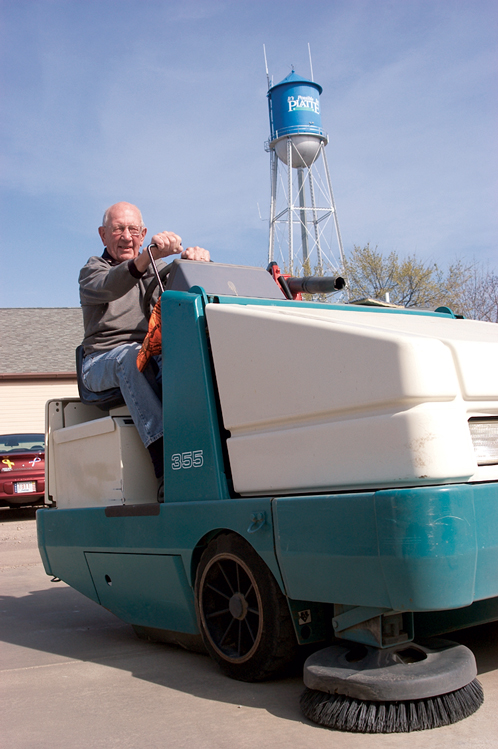 |
| Ilo Vanderboom sweeping the streets of Platte. |
Old Paps’ roadhouse stands in the Geddes Historical Village, alongside an old WNAX gas station, a replica Lewis and Clark keelboat and the childhood home of former governor and senator Peter Norbeck. The legend of Papineau’s gold survives, as well. Ducharme apparently grew rich and gave his wife $50,000 in gold in case anything happened to him. She buried the money, but when she died in 1900 the location became a mystery. The legend says Ducharme drove himself insane trying to find the money. He suffered a breakdown and died at the state hospital in Yankton in 1903. Did the endless search for lost treasure lead to his demise, or what is simply the result of a hard life on the frontier?
Papineau’s trading post also served as the first post office in the new county of Charles Mix. Organization began in earnest in 1858 when Theophile Brughier, Charles Picotte and John B.S. Todd — a cousin of Mary Todd Lincoln who was stationed with the U.S. Army at Fort Randall, just across the Missouri River — grew the idea of opening the land to settlers. The region was already home to the Yankton Sioux Tribe, so the speculators took a delegation from Yankton to Washington, D.C., hoping to finalize a treaty. They met Charles Mix, a clerk in the Interior Department who had connections within the Bureau of Indian Affairs and in the administration. In return for his help navigating the treaty through Congress, the new county was named in Mix’s honor upon its creation in 1862.
Charles Mix is still home to the Yankton Sioux Reservation, which encompasses 262,000 acres in the southern half of the county. A monument north of Greenwood commemorates the Treaty of 1858, and the famed Yankton chief Struck by the Ree, who died at Greenwood in 1888, is buried just north of that marker. The town of Marty is home to Ihanktonwan Community College and the architecturally impressive St. Paul’s Church. Students built pews and railings for the grand, limestone chapel, completed in 1942. The church’s spire rises 167 feet, while traditional Indian colors and themes are woven throughout the stained glass windows, murals and ceiling artwork.
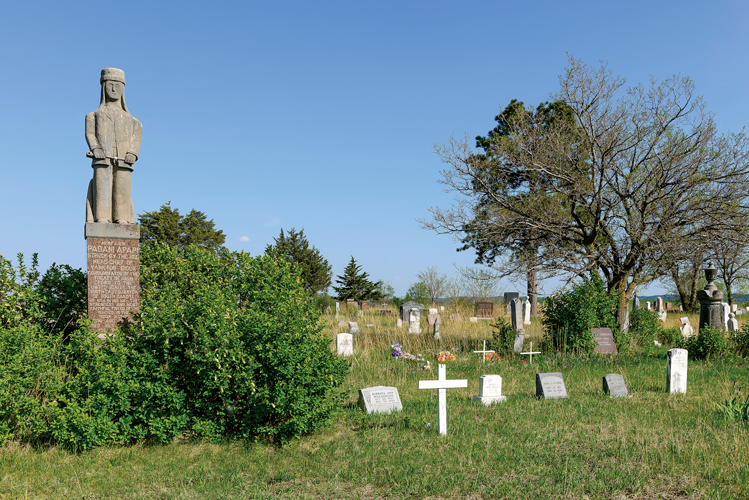 |
| The gravesite of Struck by the Ree. Photo by Chad Coppess/S.D. Tourism. |
Wagner, at just over 1,500 people, is the largest town in Charles Mix County. It’s especially known for its Labor Day celebration, a four-day gathering of fun, games, music and a grand parade down Highway 46. Lake Andes is the county seat, and the 5,600-acre national wildlife refuge east of town is home to a wide variety of wildlife.
Platte, in northern Charles Mix, is home to another 1,300 people. We visited during the summer of 2004 and one of the first faces we saw was Ilo Vanderboom’s. He created the popular Boom’s restaurants found in southeastern South Dakota, but they day we showed up in Platte he was piloting a street sweeper, intent on keeping his town clean. We found busy bakery, a movie theater and a baseball field where the Platte Killer Tomatoes (maybe the best nickname in all of South Dakota Amateur Baseball?) play their summertime games.
The fur trade isn’t as important to Charles Mix County as it once was, but perhaps an even bigger change came with the construction of Fort Randall Dam, one of six mainstem dams built along the Missouri River in the 1950s and 1960s. The town of Pickstown was created solely for the workers who toiled on the project from 1946 to 1956. When the dam was finally closed, it forever altered the Missouri River Valley. Historic towns like Wheeler were flooded, and the once wild river became a reservoir known as Lake Francis Case. That’s a good reminder to anyone planning to seek out Old Paps’ lost fur trading treasure to bring swimming trunks.
Editor’s Note: This is the 30th installment in an ongoing series featuring South Dakota’s 66 counties. Click here for previous articles.


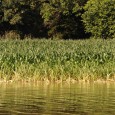




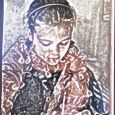


Comments